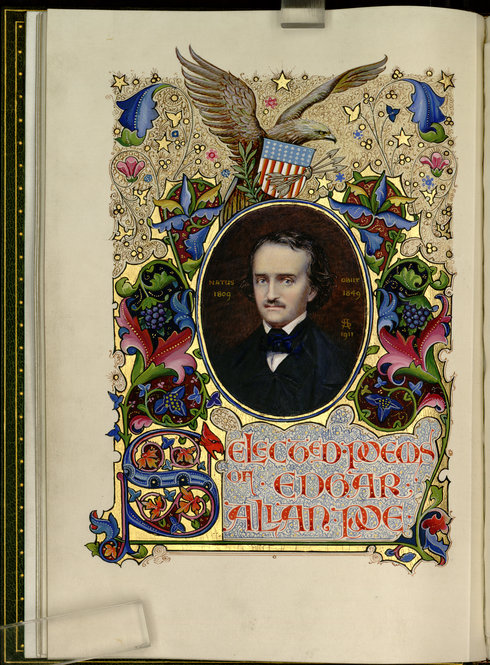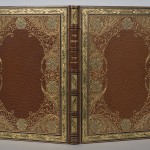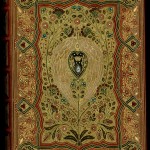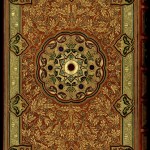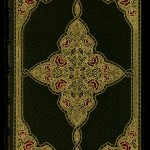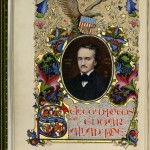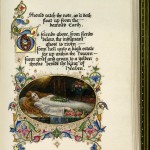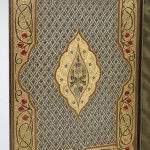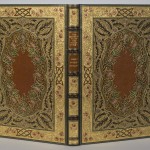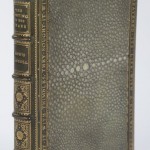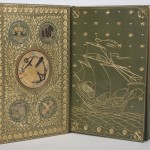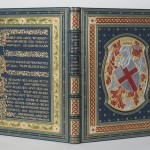Jeweled bindings, which use metalwork, jewels, ivory, and rich fabrics to decorate a book, date back at least to the Middle Ages, but the form was revived around the turn of the twentieth century by the English binders Sangorski & Sutcliffe.
Francis Sangorski and George Sutcliffe met in evening bookbinding classes in 1896. After a few years teaching bookbinding at Camberwell College of Art, they opened their own shop in a rented attic in Bloomsbury despite the difficult economic climate. Then on October 1, 1901, they founded Sangorski & Sutcliffe. Quickly, they became known for their sumptuous multi-colored leather book bindings complete with gold inlay and precious jewels. Their designs were intricate, bold, and creative. These early years were the golden age of the company. During this time Sangorski & Sutcliffe created dozens of fine bindings and grew in both popularity and notoriety. More than 80 Sangorski & Sutcliffe originals are housed in the Ransom Center’s collections.
Many of the Sangorski & Sutcliffe books at the Ransom Center are high-quality bindings but rather plain in appearance, while a few of them are quite ornate. A Sangorski & Sutcliffe binding of Thomas Moore’s Lalla Rookh, for example, has semiprecious stones inlaid inside the front and back covers. An edition of Lewis Carroll’s The Hunting of the Snark is bound in leather with stingray onlay, and semiprecious stones are inlaid inside the front and back covers. Two works, Oliver Goldsmith’s The Hermit and James Russell Lowell’s The Vision of Sir Launfal, are handwritten in calligraphy on parchment by Alberto Sangorski with decorative borders and illuminated miniatures.
One famous book that the Ransom Center doesn’t hold is a book known as the Great Omar, which was a magnificent Sangorski & Sutcliffe binding of Rubáiyát of Omar Khayyám, a narrative poem about the importance of living in the moment. Set in a Persian garden, the lyrical verses are filled with imagery of roses, celebrations of wine, and questions about mortality, fate, and doubt.
Sangorski & Sutcliffe was commissioned in 1909 to design the luxurious binding for the Rubáiyát. The front cover was to be adorned with three golden peacocks with jeweled tails, surrounded by heavily tooled and gilded vines. The Great Omar was the pride of Sangorski & Sutcliffe. Sadly, it was fated for disaster. The book was sent on the Titanic in 1912. The Great Omar went down with the ship and was never recovered. A second copy of the Rubáiyát was bound on the eve of World War II. This copy was kept in a bank safe vault to protect it. However, enemy bombing during the war destroyed the bank, the safe vault, and the second version of the Great Omar. Stanley Bray, the nephew of George Sutcliffe, created a third version of the book after he retired. This third version follows the original design and is housed in the British Library.
Sangorski drowned in 1912, but Sutcliffe continued the firm until his death in 1936. The business changed hands and names in the postwar years as interest in fine bindings declined. The firm was bought by Shepard’s in 1998, and the name of Sangorski & Sutcliffe was restored.
Please click on the thumbnails below to view full-size images.
